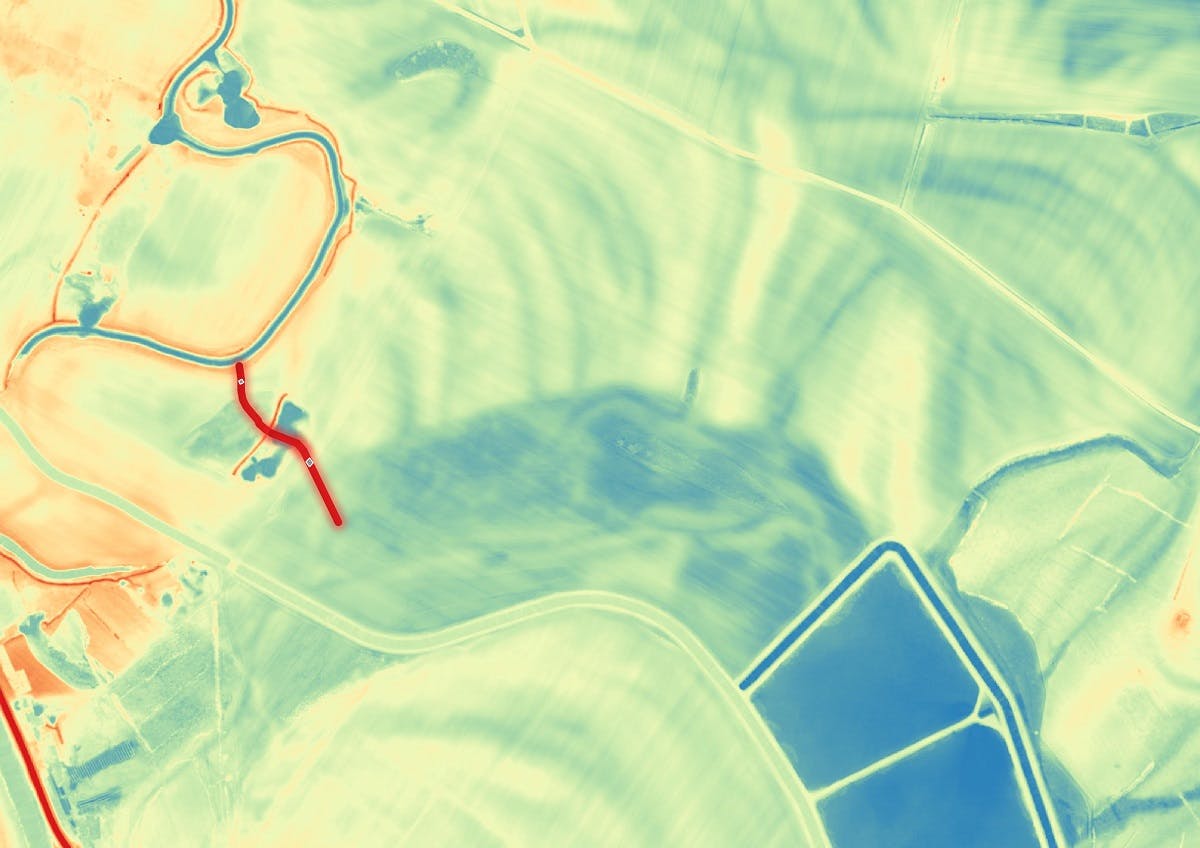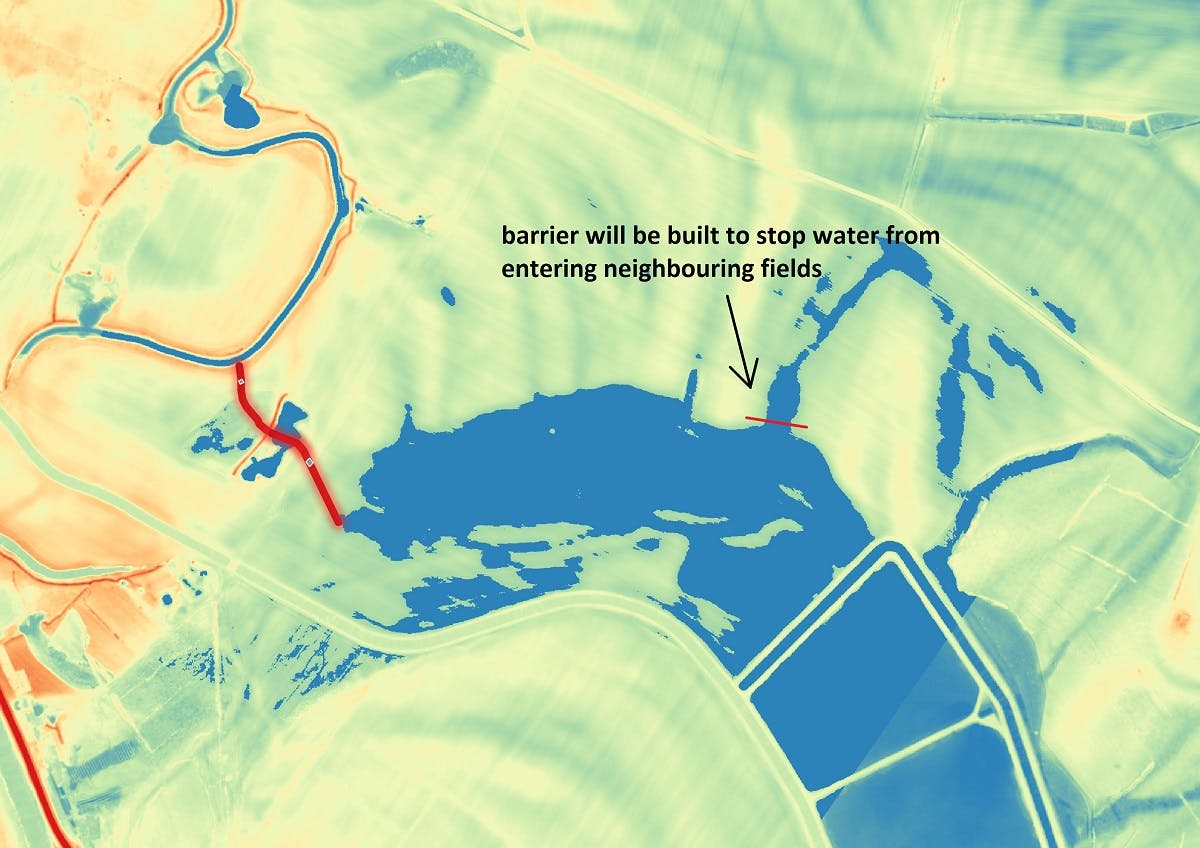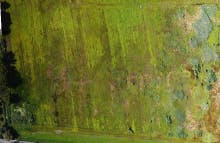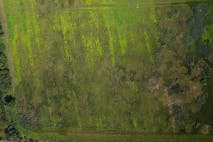- Management Plan
- Total budget: £85,000
- Budget spent: £82,202
- Status: Post-Implementation Monitoring
Healthy wetland habitats are one of the most vibrant ecosystems for biodiversity in Europe. Flora and fauna can flourish when free flowing water meanders through the land creating wetland conditions along its path. The Čiliz Brook is a stream in southwest Slovakia trying to do this, but comes up against several problems as it winds through an agricultural maze. The stream has been altered, polluted and blocked. With our partners and specialists in wetland restoration, BROZ, we plan to unclog this ‘artery’ and supply much needed water to dry lands. This will flood a small forest and a field to create amphibian ponds and transform an area into a rare wetland habitat - wet sedge meadows.
Project Timeline
Spring 2025
Construction work to build two amphibian ponds.
A Remnant of a Rich, Biodiverse Inland Delta
The Čiliz brook is one of the remaining meandering streams that used to be a part of the expansive Slovakian inland delta of the Danube River. Once a landscape dominated by water, most of the former wetlands and wet meadows were drained for agricultural production. Its current state leaves great potential to improve the ecological value of the brook and how it can be utilised to restore other types of wetlands, which can directly support biodiversity. Known as ‘biological supermarkets’, wetland habitats can cater to a tremendous range and volume of species that are drawn to feed and breed in them. This diversity spans across microbes, plants, insects, amphibians, reptiles, fish, birds and mammals. Further to this, wetlands also trap CO2 in their plant communities and soil, store floodwaters and maintain surface water flow during dry periods. The ecological importance of Čiliz Brook has been recognised through its inclusion in the Special Area of Conservation UEV Čilížské močiare under the Natura 2000 network of protected areas.
Along the brook, numerous native species are threatened by the deteriorating state and fragmentation of their habitat in the vast agricultural landscape. One of the protagonists behind the wider efforts to restore this stretch of water is the Pannonian root vole (Microtus oeconomus mehelyi), an endangered subspecies, endemic to the Pannonian basin in Slovakia and neighbouring countries Hungary and Austria. Others that join the root vole in the group of most threatened wetland species in the region include native amphibians, such as the European fire-bellied toad and the Danube crested newt. More wildlife that could benefit from this restored wetland are birds like the Eurasian bittern, the Great egret and the greylag goose, and water invertebrates like water beetles (Ochthebius sp).
Restoring native wetland vegetation is a crucial part of supporting wildlife in the area. Phragmites species, carex species and typha species are important native lowland wetland vegetation that animals like the Pannonian root vole rely on for food and shelter. These types of plants can be found in wet sedge meadows, a rare wetland type dominated by grass-like reeds. However, there is a lack of this habitat in the lowland along the Danube due to farmland taking priority and because of areas being overgrown by invasive species.
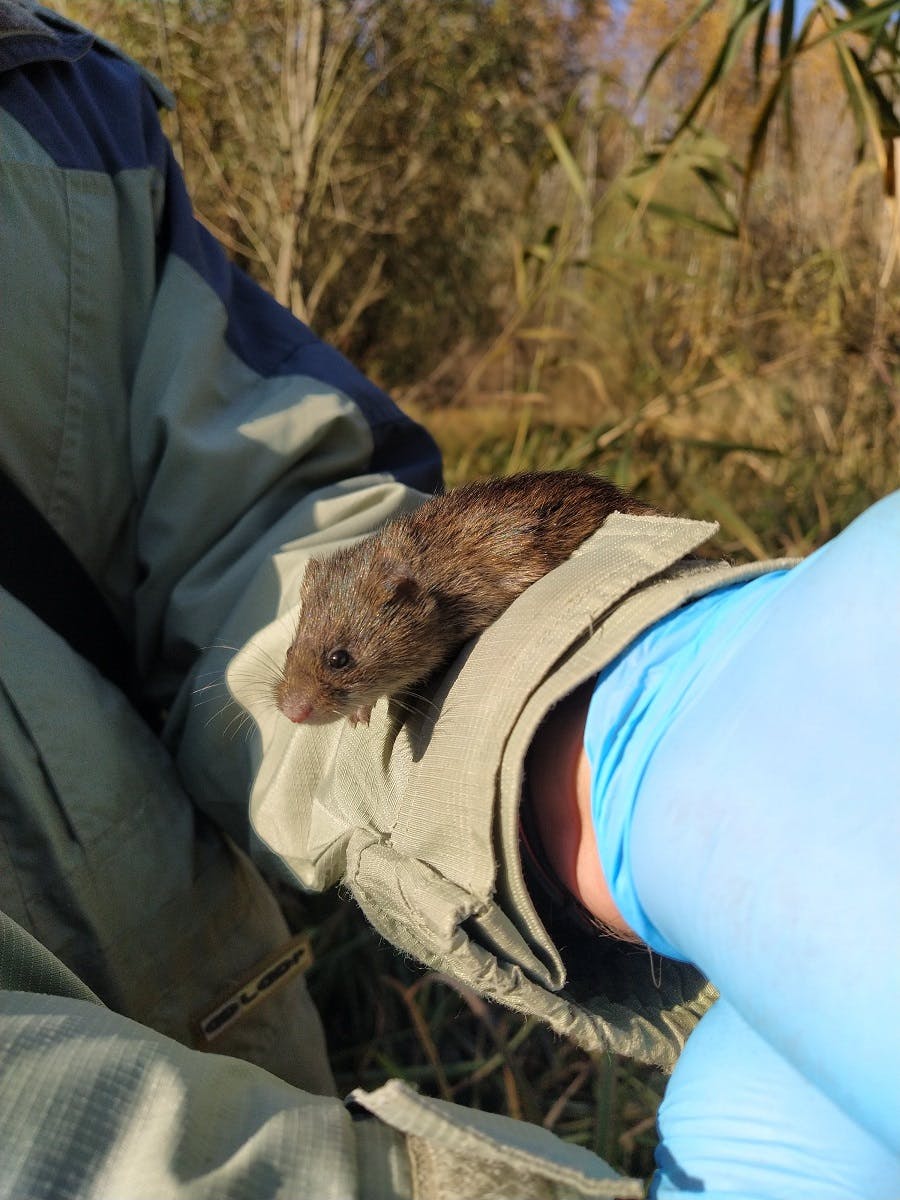
A History of Damage to the Brook
The story of the Čiliž Brook entails a familiar fate of falling victim to an accumulation of negative human influence. A history of flood control, drainage interventions and agricultural impact have significantly altered the stream’s characteristics over time, causing parts of the brook to dry up. Changes started to take shape back in the 17th century when the brook began shortening. Then in the 20th century when the outflow of water was sent into crossing drainage channels, the stream lost up to two thirds of its water. During the last half a century the wider trend of draining the land continued. The typical cultural and natural landscapes gave way to single crop monocultures across the region. Wetlands, grasslands and orchards were increasingly swapped for large monoculture fields which severely reduced the landscape’s capacity to support biodiversity.
Currently, the end of the brook is blocked by a road which has led to the stagnation of water. There’s also an issue with pollution as the stream has been used as an illegal dumping ground for trash. All of this has meant that biodiversity has suffered along the way.
Our project partners, BROZ (Bratislava Regional Conservation Association), have been trying to reverse the negative effects of the past since 2016. Their restoration work along the Čiliz Brook has focused on improving the water quality and delivering water to the lower part of the brook. A few of their interventions have included tunnelling the stream under an agricultural drainage channel and removing trash with the help of volunteers.
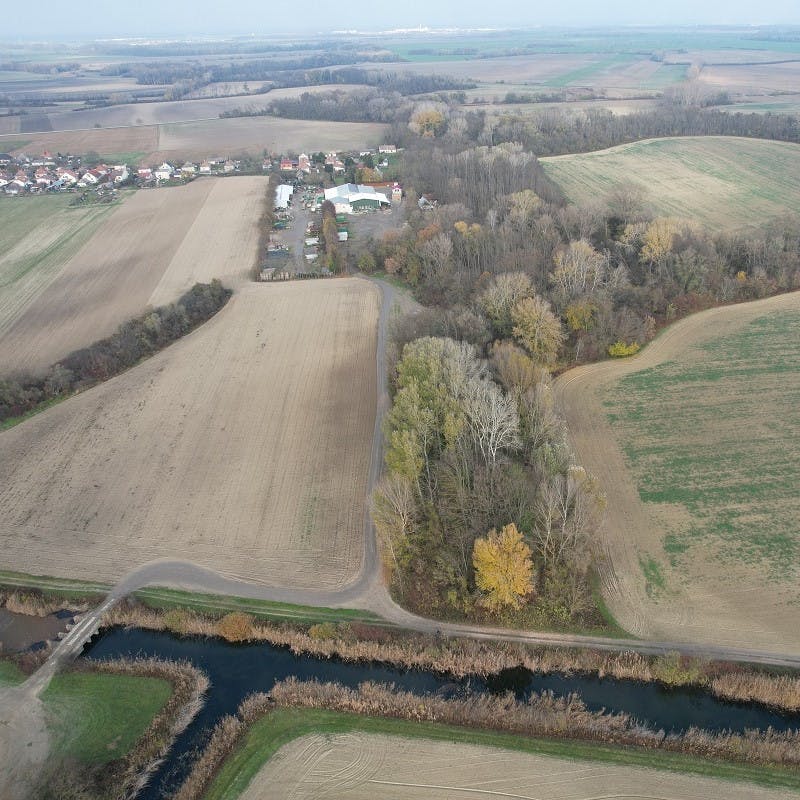

Our Project
The Plan
This project completes the series of interventions aimed at restoring the Čiliz Brook and supports wider efforts to restore wetlands on the Danube lowland. In cooperation with BROZ, we hope to rectify some of the damage done to the wetlands and the brook that are a lifeline to so much of this area’s biodiversity.
The objective is to create a new wetland habitat (a wet sedge meadow) and two amphibian ponds in a forest island beside the brook. These habitats will provide ideal conditions to support the endangered root vole and will establish a safe breeding ground for native amphibians.
To achieve this, our intervention will open the lower part of the brook and divert water to flood two areas - an adjacent field and an isolated forest. This will require digging a 500 metre channel to connect the stream to the field and the forest, both at the lower end of the brook, where it reaches a dead end. To control the amount of water entering the areas, we are building two sluice gates. The land to be flooded is an old branch of the Danube River that is lower in elevation. This means that during heavy rainfalls water accumulates in depressions making it unsuitable for farming but ideal for a wetland creation.
Click here for a 360 degree view of the site.
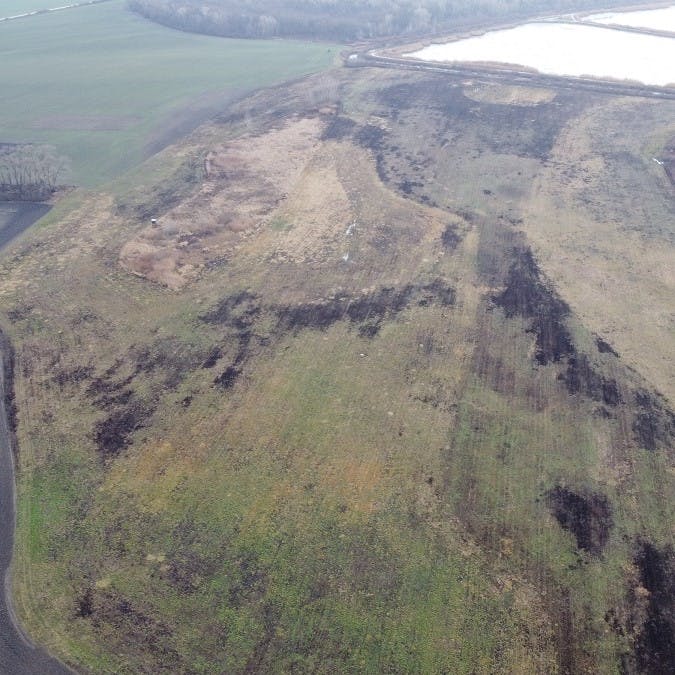
Creating a Rare Wet Sedge Meadow
Our main aim for this project is to convert this field from an unproductive field to a thriving wetland habitat.
By redirecting the stream to supply water to the field, we hope to see two key transformations:
- The return of native wetland species
- The reduction of invasive species
At present, the field (33ha / 81 acres of land owned by BROZ), is overrun with invasive species. Species, such as the non-native goldenrod (solidago sp), outcompete native plants resulting in the lack of diversity needed for local wildlife. One way to reduce the spread of these invasive species is through water. With a regular flooding regime restored to the field, wet conditions unfavourable to the non-native goldenrod would be generated that will help moderate and eventually decrease the amount of this invasive species. Ultimately, this will allow space for native species to re-establish in the wetland.
To accelerate the process, our partners, BROZ, are planning to replicate a cutting technique that has provided positive results at another wetland restoration site along the Danube River. This involves mowing the vegetation in a mosaic pattern so that excess water can flood the area to increase the rate of decline of the invasives. Cutting the vegetation annually will also help limit the growth of the invasives. Eventually, the need for maintenance of the site will diminish once the native species begin to prosper.
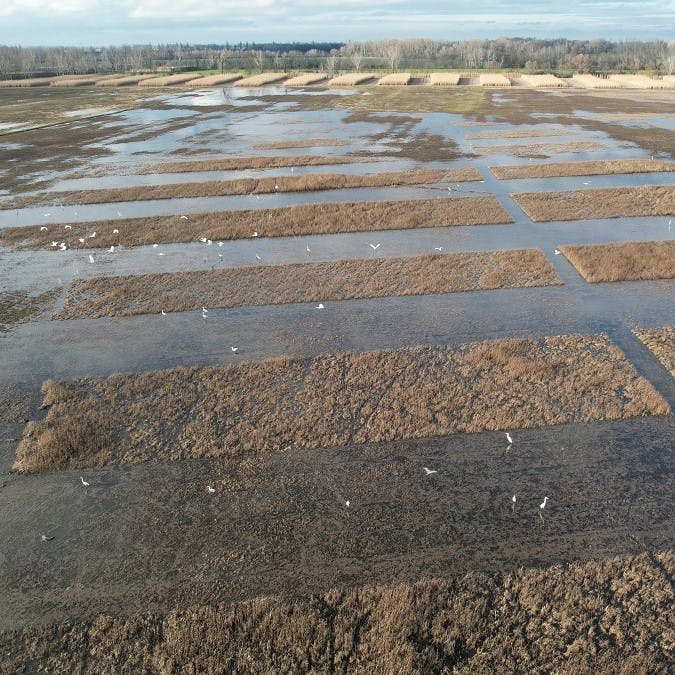
Creating Two New Amphibian Ponds
Located between the brook and the field is a small isolated forest where there is an opportunity to extend our impact by creating another important habitat. By running the channel through the forest we plan to fill the existing depressions in the ground to create two shallower depth ponds suitable for the European fire-bellied toad and the Danube crested newt. One of the ponds will be separated to make it suitable for amphibian breeding by ensuring predatory fish cannot enter the amphibian’s habitat.
Surrounded by farmland, this forest island acts as a safe haven for these two priority species and for other animals to seek refuge in.
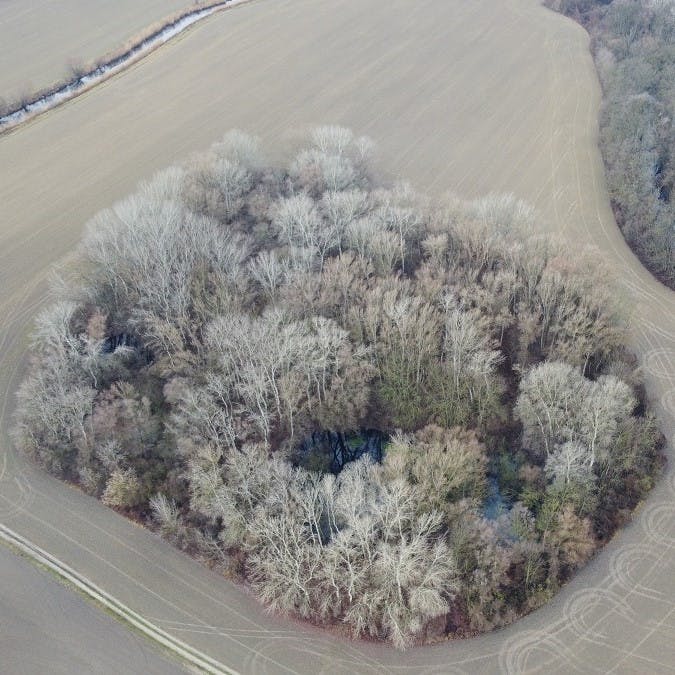
Budget and Monitoring
Through the contributions of Mossy Earth members, we are funding the entirety of the €85,000 budget for the channel excavation and construction of water regulation structures.
To monitor the project’s progress, BROZ will conduct a range of assessments to measure indicators of progress. This includes field monitoring and remote sensing methods to assess how the area floods or becomes saturated with water, monitoring the abundance of the invasive solidago as well as monitoring of the target species presence and abundance (see the Danube crested newt below). This monitoring will take place every year until at least 2025.


Drone images of the project site after flooding it
We dug a channel to redirect the stream through the forest and into the field, flooding our project area. Two segments of the channel were built to run underground for the neighbouring farmer to have access to his field and the public dirt road to remain usable.

Maps of the project site
The following maps show the project area before flooding and the expected results after flooding.

Evidence of the measures to reduce the invasive species
Photos from the flooded area in Čiližská Radvaň, a wetland with similar characteristics restored by BROZ, in spring 2021 and spring 2022 respectively, showing the retreating invasive plant.
Partners and Stakeholders
In addition to our key partner for this project, BROZ, the research team at the Faculty of Natural Sciences from Comenius University in Bratislava and the State Nature Conservancy are also involved in the project’s monitoring component.
The outcomes of this project will also be presented to students, at conferences and at study tours for conservation professionals. Results from the monitoring of the target species will be made available to conservation professionals.
In terms of other stakeholders, neighbouring farmers could benefit from the wetland habitat creation because the wetland will also improve soil quality and soil moisture of the adjacent lands, an important co-benefit of the wetland creation in the context of increasing droughts.

the team behind the project
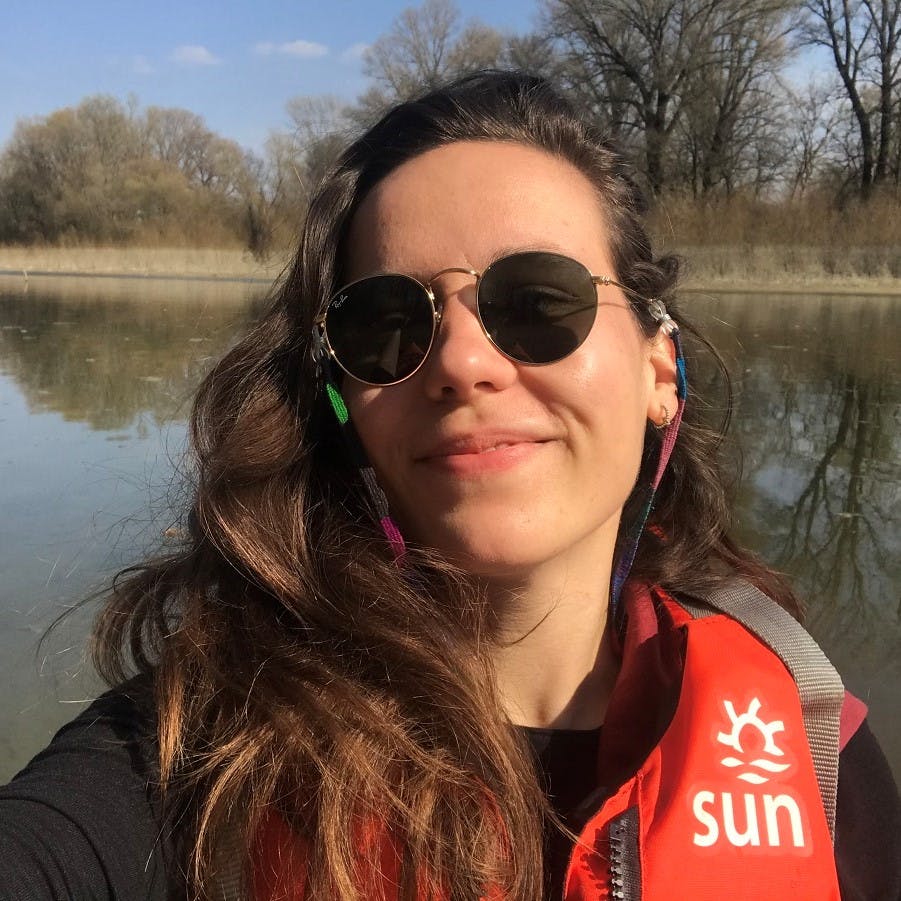
Adriana Brossmannova, Conservation Biologist, Mossy Earth
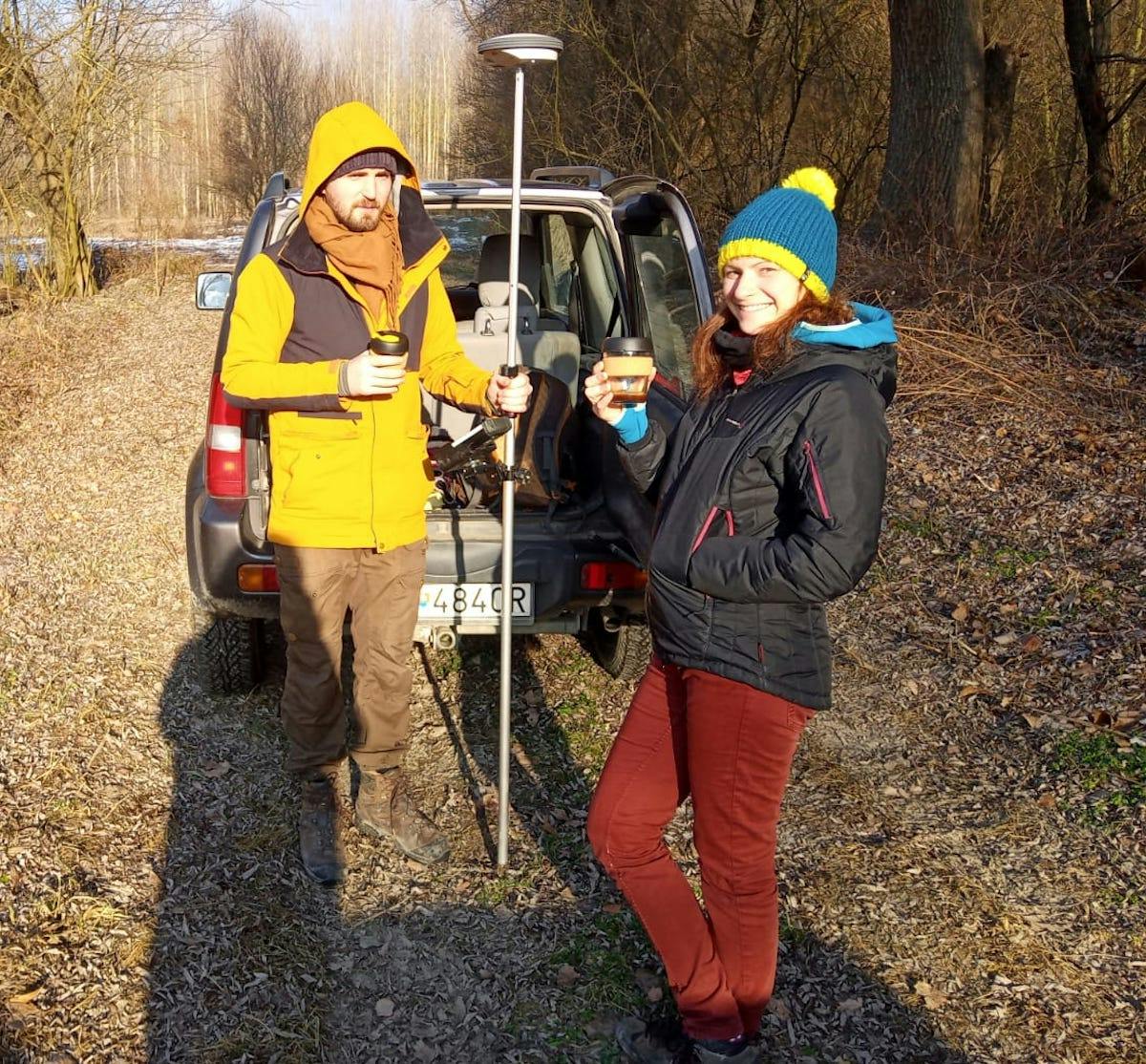
BROZ Wetland Team
Sources & further reading

- “The occurrence of Pannonian root vole (Microtus oeconomus mehelyi) in small mammals’ communities in Danubian Plain. Folia Oecologica 43 (1) : 83–88. ” - Ambros et al. 2016
- “Habitat preferences of small mammals occurring in two studied wetlands of Žitný ostrov area. Folia faunistica Slovaca 21 (3) : 229–233.” - Hulejová-Sládkovičová et al. 2016






